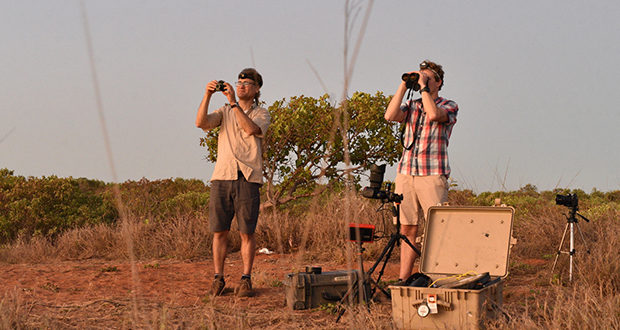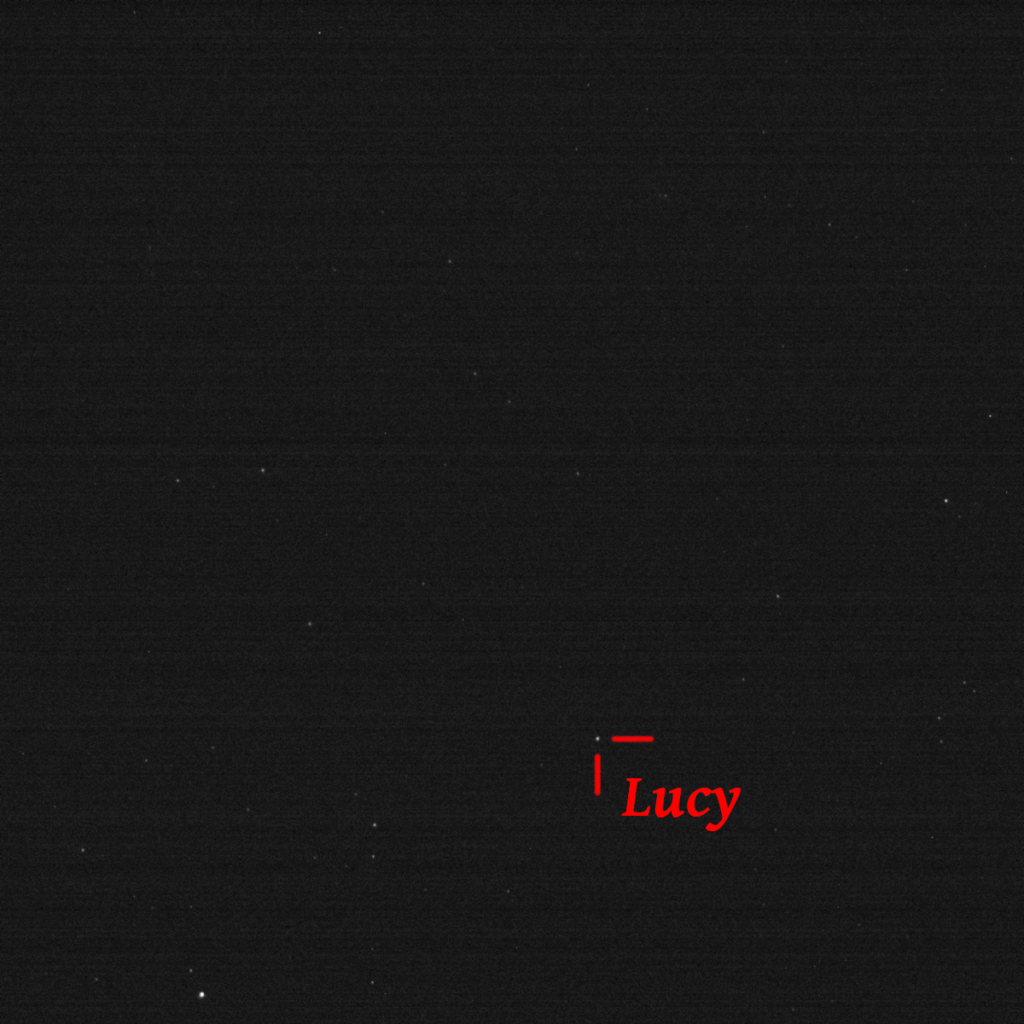Over the weekend, a team of Curtin University researchers were tasked by NASA to observe the Lucy' spacecraft as it passed close to Earth, with Western Australia being the best vantage point.
Researchers from Curtin’s Desert Fireball Network headed to Port Hedland on Sunday to catch a glimpse of the small spacecraft as it came to the same altitude as low-Earth-orbiting satellites such as the International Space Station.
"It went really well, clear skies, Lucy was spot on time. We managed to track it throughout the pass, and got some good data on tape," Curtin astronomer Dr Hadrien Devillepoix told Campus Review.
NASA’s Lucy mission was launched last year and is the first spacecraft sent to explore the Trojan, a population of small asteroids orbiting around Jupiter.
The spacecraft came close to the Earth for its first gravity assist which accelerated and directed Lucy’s trajectory beyond the orbit of Mars.
The Curtin team used cameras to record the passage of Lucy and collect information about its general state.
“NASA has actually asked us if we could observe that event as it was a really good opportunity. Lucy is a small spacecraft and anytime it's far away from the sun, it's hard to observe optically,” Devillepoix said.
The spacecraft is set to explore Trojans asteroids which are small bodies residues of our first solar system orbiting around Jupiter in two loose groups: one group leading ahead, the other trailing behind.
After its launch in 2021, the spacecraft had solar-panel deployment problems, and while it is currently getting solar power, Devillepoix said there might be loose mechanical parts that could potentially create major problems in the future.
“What the NASA engineers are worried about is that when they fire up the main engine, any part that is going to rattle things around and potentially create issues.
“We have been looking whether Lucy’s solar panel reflects the Sun, and hopefully that will tell the NASA engineers whether the panels have fully deployed and are locked in place which is essential before they can fire up its main engine.
“They need to know that the spacecraft is in a good state and can continue on with its long mission and want to make sure they'll be operating a very healthy spacecraft for the next few years,” Devillepoix said.
The Lucy mission is set to last at least 12 years, and will explore a record-breaking number of asteroids before reaching Jupiter in 2027.
The spacecraft equipped with a range of cameras will not only take pictures of asteroids but will also be looking at their different colours, wavelengths in order to characterise them.
“It will index the necessary data to know what these rocks are made of as we currently have not much of an idea.”
Lucy will provide insight on asteroids to NASA researchers as no other space mission has been launched to as many different destinations.
The data collected by the Curtin team over the weekend will be sent to NASA engineers who will assess the situation and make informed decisions depending on the data received.
Curtin’s Space Science professor Phil Bland, who is also taking part in the project, will be flying next month to the US for a formal meeting with the NASA space agency.
Do you have an idea for a story?Email [email protected]
 Campus Review The latest in higher education news
Campus Review The latest in higher education news


